What is a roe deer and how did they end up in the UK? What do they eat, where do they live and what is their environmental impact? Learn all about this species with our comprehensive guide to roe deer.
Our guide to roe deer in the UK, including facts about the species, what they eat, and where to see.
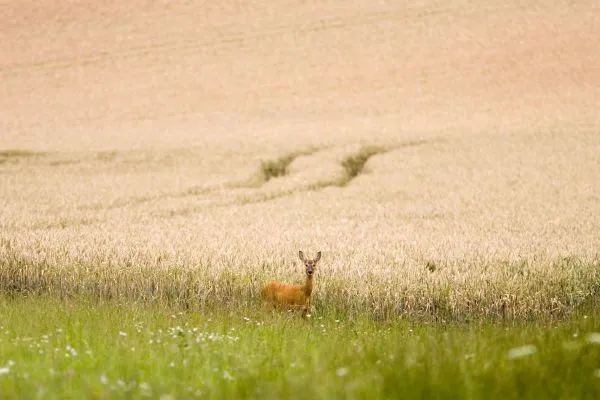
What is a roe deer?
A roe deer, Capreolus capreolus, is a species of small to medium-sized deer native to Europe, Asia, and parts of Western Asia. Characterized by their relatively small size, reddish-brown fur, and distinctive white rump patch, they have antlers, typically with two tines, which are grown by males and shed annually.
Where do roe deer live?
Far from the heaths and rugged moors where herds of red deer roam wild, the little roe selects gentle countryside: copses and arable fields, golf courses and churchyards.
Roe do not seek company. They can form unstable herds in winter but summer groupings are often simply a doe and her fawns.
What do roe deer eat?
Roe deer are predominantly crepuscular, emerging at dawn and twilight to forage for grass, leaves, young shoots and berries.
Some species they eat have evolved over the past 10,000 years after they entered the thawing peninsula that would become Britain: Wood avens, a cluster of butter-yellow petals, increases its root size when nibbled, and may even drop its nitrogen levels to deter a repeat meal. Some plants – especially silver birch and grasses – exploit roe in return as a passenger service for seeds.
How to identify roe deer
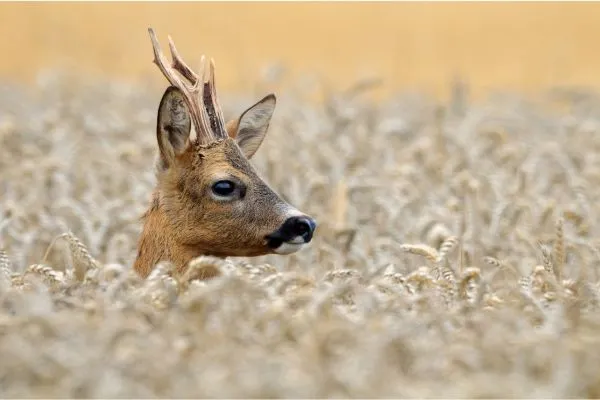
Rose deer have several distinctive features. Here’s what to look out for help you recognise roe deer:
- Roe deer are relatively small to medium-sized, standing about 0.75 metres at the shoulder. They have a slender build with a short, compact body. The head is relatively small, and roe deer have a short neck.
- Roe deer have a reddish-brown coat, which can vary depending on the season. In winter, their fur may appear more greyish. The undersides and the area around the tail are usually lighter in colour, and there is a distinct white rump patch.
- They have large ears and black eyes, noses and mouths, which are surrounded by white areas.
- Males typically have antlers with up to three points.
- Described as ‘pearled’ or ‘bearded’, their antlers have a rough texture with nodules.
- While neither male or female have a tail, female roe deer has a small tuft at the base of their rump during the winter.
How to track roe deer
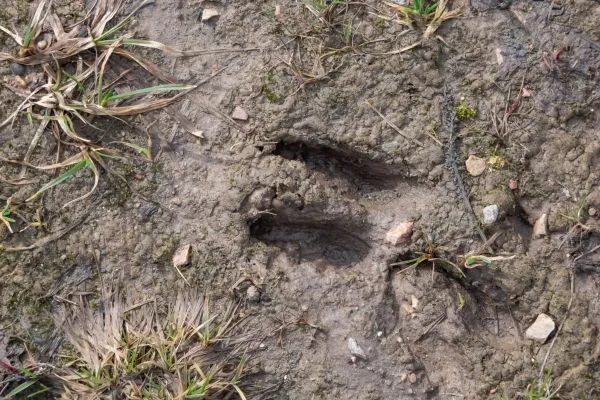
A roe deer’s dainty steps leave neat cloven tracks, less splayed than a sheep and with a width of 3cm to a muntjac’s 2cm. In very soft soil or deep snow, the dew claws (vestigial claws above the hooves) may show. But roe deer write many other stories on landscape:
- Look for circular scrapes (about 60cm across) on the woodland floor where leaves have been cleared to create a resting patch; you may find several in close vicinity.
- Trees with a trunk of about 5cm attract bucks as territory markers; long scratches at their base signal hooves at work. Rutting pairs create ‘roe rings’ as they chase around trees.
- Roe dung is rabbit-like, but inclined to clump when the deer has a richer diet.
- Use binoculars to scan fields adjacent to woodland, especially at dusk, to glimpse roe deer. Arable fields attract them; sheep pastures may be avoided, and the electric fencing that often comes with horses excludes them.
What noise do roe deer make?
Roe bark, somewhat like a fox but a rougher, drier sound.
What is the difference between roe and fallow deer?
There are three main differences: roe deer have the characteristic black nose and white chin, which fallow deer don’t have. Roe deer have small antlers with up to three points, whereas fallow deer have large, broad and flattened antlers, also called palmate. Finally, roe deer are much smaller than fallow deer.
When do roe deer shed their antlers?
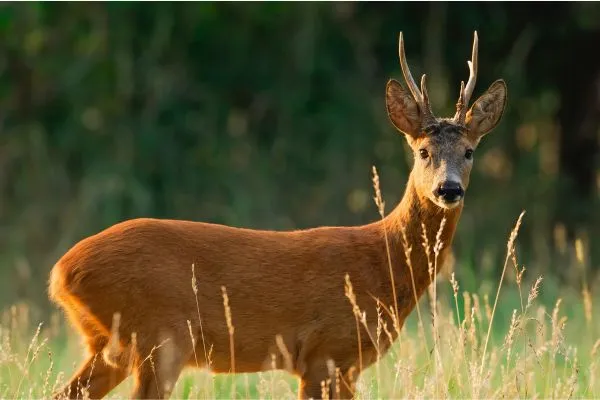
The antlers start growing in the spring. They reach their full size by late autumn after which they are shed, ready to grow again the following year.
When do roe deer rut?
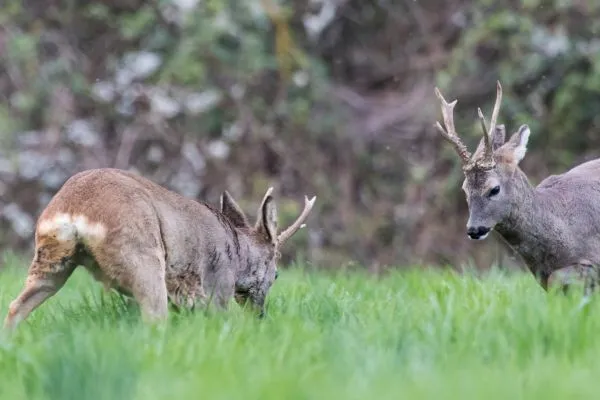
Otherwise known as the behaviour of deer during the breeding season, male roe deer rut between mid-July to mid-August. Fighting over territory, the winner takes all and these battles can result in serious injury or death.
What is a group of roe deer called?
Commonly referred to as a herd of deer, the collective noun for roe deer is ‘a bevy’.
What are male, female and young roe deer called?
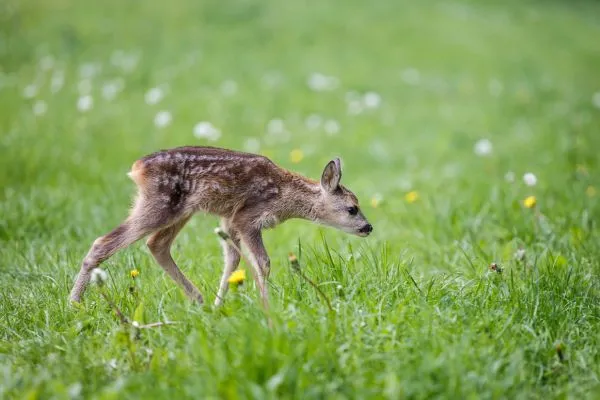
Male roe deer are bucks, females are does and the young are called kids.
What is the lifecycle of a roe deer?
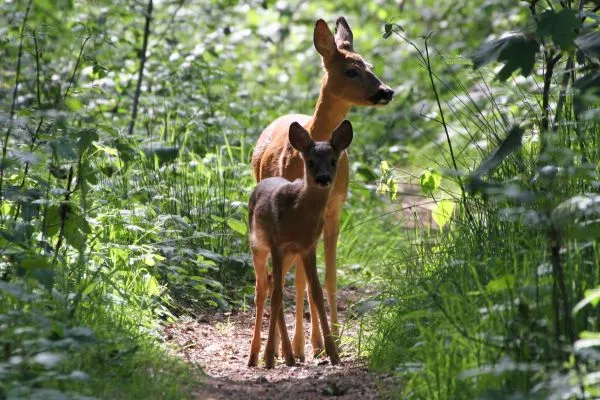
The woods are a riot of bluebells when roe fawns are born in May. The doe nurses her young up to nine times a day for the first month; between feeds,
Males rub their forehead against small trees and scrapes the ground. His antlers, dropped in November and regrown almost immediately, are free of velvet and ready for battle. Roe bucks do not contest for a herd like red deer stags; instead they defend a range of up to 200 hectares, mating with the does within.
A figure-of-eight pattern is beaten into the undergrowth as they chase in courtship. So the fawns, still dependent on their mother, face her becoming pregnant again – but incredibly, the fertilised ovum only develops to a diameter of 5mm in the first five months. It is not implanted into the uterus until January, and grows rapidly thereafter.
Roe are the only known hoofed mammal to display this strategy – known as embryonic diapause – and it spares them to feed rather than rut in autumn. Now about 70% of adult body mass, the fawns join their mother as she feasts on fallen crab-apples and fungi such as puffballs and brittlegills.
A delayed pregnancy may ensure that both rutting and fawn birth occur at optimal times of year.
Are roe deer endangered in the UK?
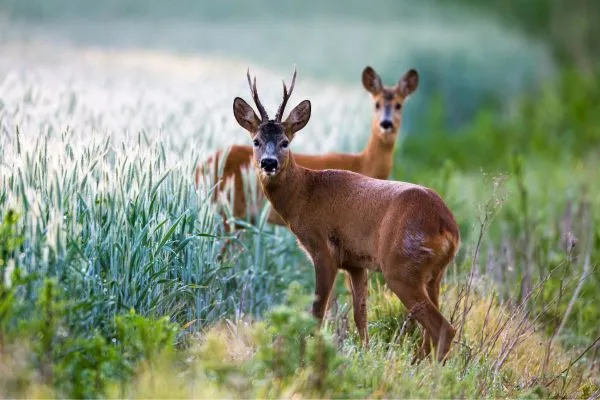
Roe deer caught the eye of hunters long after Mesolithic times; the Domesday Book notes that ‘haii capreolorum’ – hays or hunting enclosures for roe deer – were common. The Normans also introduced fallow deer to Britain and, within a few centuries, this sociable, spotted deer of parkland had overtaken roe in abundance. It was soon the motive for a fatal blow: roe were stripped of forest law protections because they were believed to chase away more favoured deer.
Numbers in decline
Hunted intensively, and with its favoured woodlands in decline, roe clung on in Scotland, but became only a name on the map in Wales – the Afon Iwrch, River of Roe, flowed in Clwyd long after the deer was gone.
England’s last known specimen was killed in Northumberland in the early 18th century. Then its fate changed. In 1800, Lord Dorchester released Scottish roe into Dorset – this later provided a source population for Epping Forest, while German deer were imported into Norfolk in the 1880s. Save for a decline during the war years, they have been steadily reclaiming the countryside ever since.
Did you know? The classic, much-loved book, Bambi, written by Felix Salten in 1928, was originally about the life of a roe deer.
Impact of grazing
Grazing deer do damage. Woodland is losing its understorey, and with it the sweet song of the nightingale. Farming has noted consumption of cereals and kale. Horticulture has experienced damage to orchards. Forestry finds the protection of seedings challenging. There is consensus that deer numbers are concerning, but splitting the impacts of Britain’s six species is not easy, especially when they interact with each other; muntjac suppress roe to an extent.
The species that rings most alarm bells is the roe’s old nemesis, the fallow. However, roe do interfere with coppicing by browsing hazel regrowth. Cutting stools higher helps prevent damage, as does felling larger areas – although that is best avoided where dormice are present.
Natural predators
Debates about deer management are often tagged with a footnote that no natural predators are here to assist, but that is untrue. Foxes are enthusiastic roe fawn predators – studies show they can account for over 80% of fawn mortality.
Wolf and lynx have left us, but they were not the reason why roe almost became extinct, and their absence cannot fully explain deer abundance now. Predation has drama, but the subtle force of landscape change wields greater power. By planting cereal crops in autumn, we have given roe a feast during barren winters. And as afforestation receives vocal political and public support, Britain’s tree cover has increased. If we create roe habitat, we can expect them to exploit it. As with most conservation conundrums, we will only resolve the roe riddle when we consider our impact on the land as a whole.
How high can roe deer jump?
Known for their agility and can make quick, bounding movements. When it comes to protecting your garden, The Royal Horticultural Society suggest a 4ft (1.2m) high fence should be adequate to deter roe deer.
About the author:
Adele Brand is a mammal ecologist and author with a passion for connecting people with wildlife. She has written The Hidden World of the Fox
Want to find out more?
Our experts have a complied a range of guides about deer and other British wildlife species, including British deer guide, places to see the autumn deer rut and the most endangered species in Britain.
This feature contains affiliate links and we may receive a commission for purchases made. Please read our affiliates FAQ page to find out more and read about how we write BBC Countryfile Magazine reviews.
